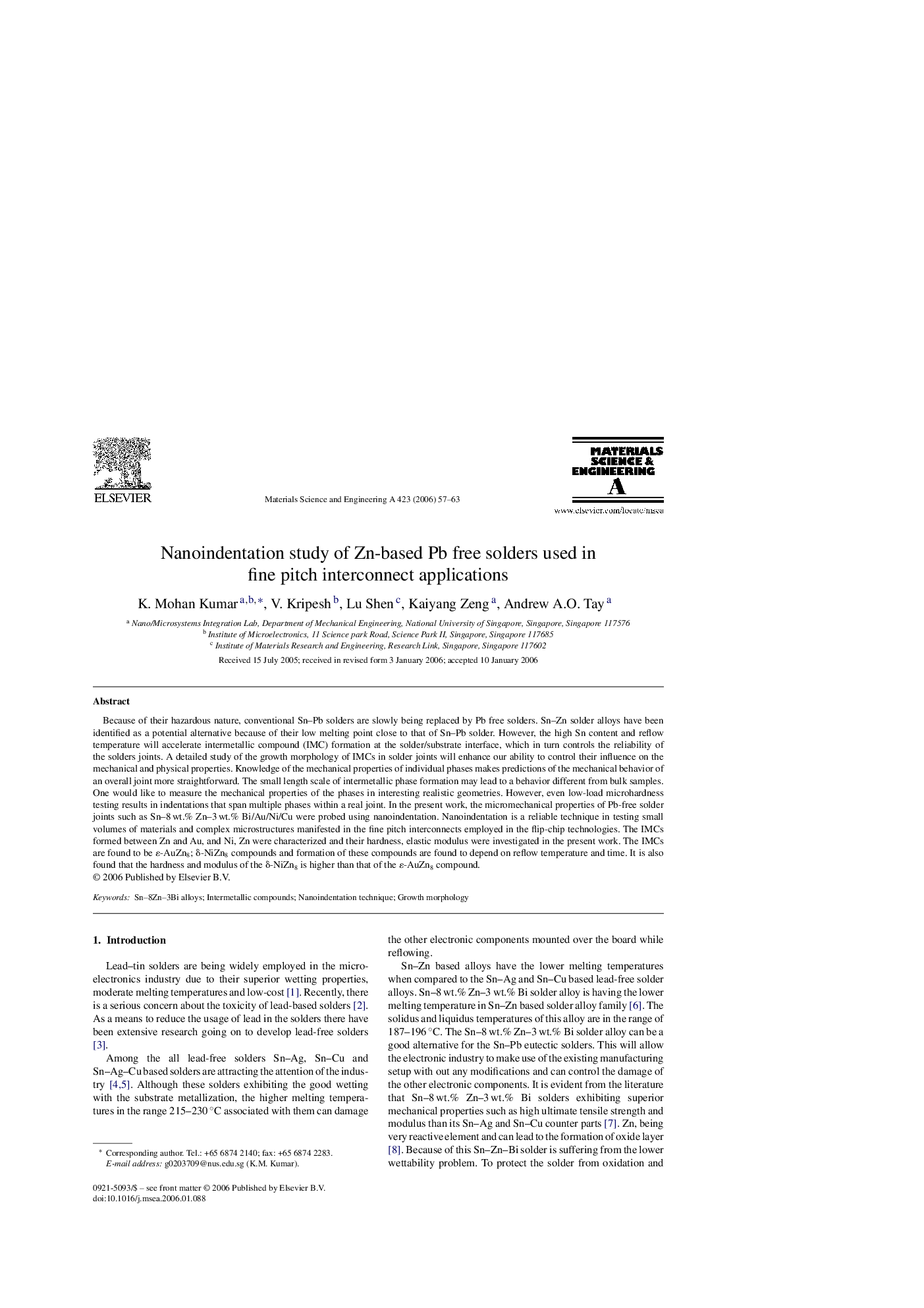| کد مقاله | کد نشریه | سال انتشار | مقاله انگلیسی | نسخه تمام متن |
|---|---|---|---|---|
| 1585640 | 1514921 | 2006 | 7 صفحه PDF | دانلود رایگان |

Because of their hazardous nature, conventional Sn–Pb solders are slowly being replaced by Pb free solders. Sn–Zn solder alloys have been identified as a potential alternative because of their low melting point close to that of Sn–Pb solder. However, the high Sn content and reflow temperature will accelerate intermetallic compound (IMC) formation at the solder/substrate interface, which in turn controls the reliability of the solders joints. A detailed study of the growth morphology of IMCs in solder joints will enhance our ability to control their influence on the mechanical and physical properties. Knowledge of the mechanical properties of individual phases makes predictions of the mechanical behavior of an overall joint more straightforward. The small length scale of intermetallic phase formation may lead to a behavior different from bulk samples. One would like to measure the mechanical properties of the phases in interesting realistic geometries. However, even low-load microhardness testing results in indentations that span multiple phases within a real joint. In the present work, the micromechanical properties of Pb-free solder joints such as Sn–8 wt.% Zn–3 wt.% Bi/Au/Ni/Cu were probed using nanoindentation. Nanoindentation is a reliable technique in testing small volumes of materials and complex microstructures manifested in the fine pitch interconnects employed in the flip-chip technologies. The IMCs formed between Zn and Au, and Ni, Zn were characterized and their hardness, elastic modulus were investigated in the present work. The IMCs are found to be ɛ-AuZn8; δ-NiZn8 compounds and formation of these compounds are found to depend on reflow temperature and time. It is also found that the hardness and modulus of the δ-NiZn8 is higher than that of the ɛ-AuZn8 compound.
Journal: Materials Science and Engineering: A - Volume 423, Issues 1–2, 15 May 2006, Pages 57–63